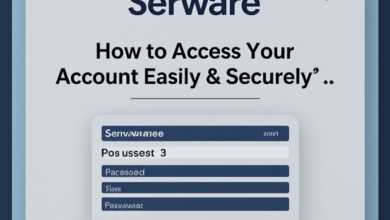Can the ADC-VDB755P Record to SVR

The ADC-VDB755P is a popular video doorbell model known for its high-definition video quality, advanced motion detection, and integration capabilities with smart home security systems. One of the common questions among users and potential buyers is whether this device can record footage directly to a Stream Video Recorder (SVR). This article will explore the capabilities of the ADC-VDB755P, its compatibility with SVR systems, and how you can set it up for optimal performance.
Overview of the ADC-VDB755P
The ADC-VDB755P is a high-end video doorbell produced by Alarm.com, designed to provide enhanced home security through real-time video monitoring, motion detection, and two-way audio communication. Key features include:
- High-Definition Video: The doorbell camera provides 1080p HD video with a wide-angle lens, offering a clear and expansive view of your entryway.
- Advanced Motion Detection: With customizable motion zones, the device minimizes false alarms by focusing on specific areas.
- Night Vision: The doorbell camera is equipped with infrared night vision to maintain visibility even in low-light conditions.
- Two-Way Audio: Users can communicate directly with visitors via the built-in microphone and speaker.
- Cloud Storage Integration: Footage can be saved to Alarm.com’s cloud-based storage service, which is accessible via the Alarm.com mobile app.
While these features make the ADC-VDB755P a robust choice for home security, questions often arise regarding its ability to store footage locally on an SVR.
What is a Stream Video Recorder (SVR)?
An SVR, or Stream Video Recorder, is a device that stores video footage from connected cameras on a local network. Unlike traditional DVRs (Digital Video Recorders) or NVRs (Network Video Recorders), which store video data directly from analog or IP cameras, an SVR works specifically with Alarm.com cameras, allowing continuous recording without relying solely on cloud storage.
SVRs are popular among users who require continuous 24/7 recording or those who prefer local storage for privacy or redundancy purposes. This setup ensures that footage is available even during internet outages, providing a reliable and accessible video archive.
Compatibility of the ADC-VDB755P with SVR
The ADC-VDB755P is compatible with Alarm.com’s Stream Video Recorder (SVR) devices, which are designed to work seamlessly with Alarm.com’s ecosystem. However, it’s essential to understand the specifics of how the SVR interacts with video doorbells compared to standard security cameras.
- Limited Direct Recording: Unlike other Alarm.com cameras, which can continuously record to the SVR, video doorbells like the ADC-VDB755P have some limitations. They do not directly stream continuous video to the SVR due to the nature of their design, focusing instead on event-triggered recordings.
- Event-Based Recording: The ADC-VDB755P records and sends footage to the SVR when specific events occur, such as motion detection, a doorbell press, or manual recording commands from the user. This setup ensures that important moments are captured without overwhelming the SVR with continuous footage.
- Integration with Alarm.com Cloud: While the SVR stores event footage locally, the ADC-VDB755P also utilizes Alarm.com’s cloud storage, providing a backup layer for recorded events. This dual-storage approach enhances data security and accessibility.
Setting Up the ADC-VDB755P to Record to SVR
To ensure your ADC-VDB755P is configured correctly to record to an SVR, follow these steps:
- Verify Compatibility: Make sure your SVR model is compatible with Alarm.com video doorbells. Alarm.com SVR models like the SVR122 and SVR2020 are known to work well with the ADC-VDB755P.
- Connect to Your Network: Ensure both the SVR and the ADC-VDB755P are connected to the same network. A stable internet connection is crucial for the devices to communicate effectively.
- Link the Devices via the Alarm.com App:
- Open the Alarm.com app on your smartphone or tablet.
- Navigate to the “Video” section and select “Settings.”
- Choose “Stream Video Recorder” from the list of devices and follow the prompts to link your SVR with the doorbell camera.
- Set Recording Rules: Customize the recording rules in the Alarm.com app:
- Define specific triggers (motion detection, doorbell press, etc.) for recording.
- Adjust the video quality and retention settings to balance storage capacity and video quality.
- Test the Setup: Once configured, test the system by triggering events to ensure that footage is being saved to the SVR correctly. Check both the SVR and the Alarm.com cloud storage to verify that events are recorded as expected.
Advantages of Using an SVR with the ADC-VDB755P
- Enhanced Privacy: Storing video locally on an SVR reduces reliance on cloud storage, providing a more private and secure recording option.
- 24/7 Accessibility: Even if your internet goes down, the SVR can continue storing footage, ensuring you don’t miss critical moments.
- Extended Storage Capacity: Unlike the limited cloud storage plans, an SVR allows for significant storage expansion, which is ideal for users requiring a longer retention period for their video footage.
Limitations to Consider
- Event-Based Recording Only: The ADC-VDB755P will not provide continuous 24/7 recording to the SVR. It records based on events, which might not cover all activities at your doorstep.
- Storage Management: Users need to manage their SVR storage settings to avoid overwriting important footage, especially if using high-definition recording settings that consume more space.
Conclusion
While the ADC-VDB755P does not record continuously to an SVR, it can effectively save event-triggered footage, providing an additional layer of security and flexibility for homeowners. Integrating this video doorbell with an SVR is a great way to enhance your home security system, offering reliable event storage that combines the best of both cloud and local recording solutions. By setting up your ADC-VDB755P with an SVR, you can ensure critical moments are captured and stored safely, enhancing the overall functionality and reliability of your security system.




